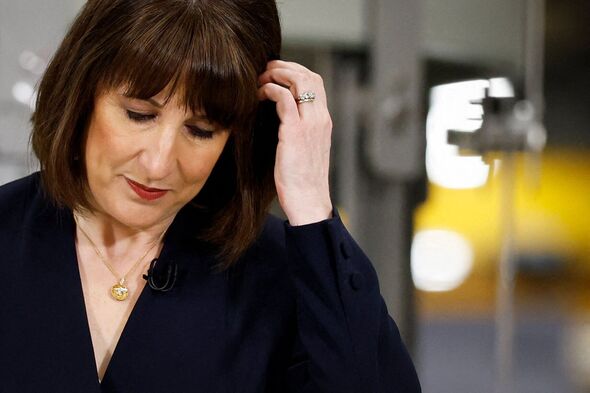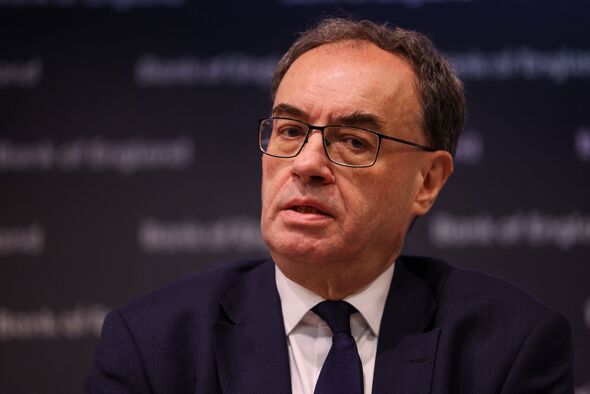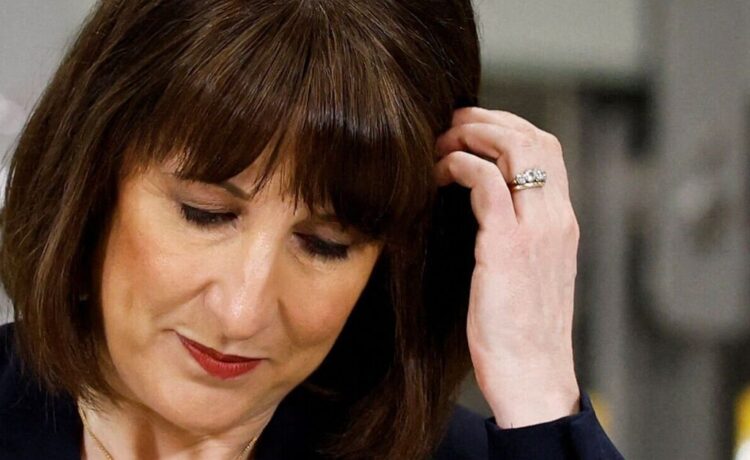Rachel Reeves quizzed on likelihood of further tax rises
Chancellor Rachel Reeves is deliberately downplaying the true scale of the UK’s debt, masking a £200bn “black hole” to justify further borrowing, according to banking expert Bob Lyddon.
Mr Lyddon accused the so-called “Blob” – a term he uses to describe the Treasury, the Bank of England, the Office for National Statistics, the Office for Budget Responsibility, and Downing Street – of misleading the public, with Ms Reeves at the heart of the strategy.
The founder of Lyddon Consulting Services told Express.co.uk: “The most egregious example is their routine presentation of the Bank of England’s huge losses as an asset that can be deducted from the national debt. It’s a conjuring trick that deceives the public into believing we have more ‘headroom’ for borrowing than we actually do.”
At the heart of the issue is public sector net debt, calculated by the Office for National Statistics (ONS) to be £2.62 trillion as of December 2024. However, this figure is significantly lower than the true scale of the nation’s obligations, claims Mr Lyddon.
He explained: “The biggest step down is the £200bn black hole between Public sector net debt and Public sector net debt less ‘Bank of England’, and it is in itself implausible: £95bn of it is a loss, not an asset. The remainder is unexplained. Instead of there being a deduction, there should be an addition for the Bank of England.”

Chancellor Rachel Reeves (Image: Getty)
This accounting “sleight-of-hand” has enabled the Government, under Ms Reeves’ economic leadership, to promote the concept of “borrowing for investment,” said Mr Lyddon, as a way of masking the true cost of projects such as the revival of the defunct Robin Hood Airport near Doncaster.
The scheme is estimated to cost roughly £138 million, with funding via a £60.6 million council loan and a £44.6 million rent deferral loan, scheduled for spring 2026.
Such investments are counted as public assets, which are then offset against the debt incurred to finance them.
Mr Lyddon warned: “The public is being gaslit. The Blob socialises a narrative that the nation’s finances are managed prudently and by professionals, when in fact the country is being driven deeper into the mire of debt.”

The Government backs the reopening of what was most recently Doncaster Sheffield Airport (Image: Getty)
The implications are far-reaching, Mr Lyddon suggested, with the Government’s ability to continue borrowing dependent on international confidence in the UK’s fiscal health – confidence which could be severely undermined if the true scale of the nation’s liabilities were laid bare.
Mr Lyddon pointed to the £100bn still owing under New Labour’s Private Finance Initiative (PFI), debts of public financial and non-financial corporations, and the underreported liabilities of local governments as figures that should be included in a realistic assessment of the national debt.
The Blob’s perceived abandonment of the General Government Gross Debt (GGGD) metric, previously mandated under the Maastricht Treaty, is another cause for concern, Mr Lyddon pointed out.
The Office for National Statistics (ONS) announced in December 2024 that it would discontinue the publication of the UK government debt and deficit statistical bulletin, which included the General Government Gross Debt (GGGD) metric.

Bank Of England Governor Andrew Bailey (Image: Getty)
The final release is scheduled for April 30, 2025. Subsequently, the ONS will integrate these data into the Public Sector Finances, UK bulletin, starting from June 2025.
GGGD provided a more comprehensive view of the nation’s liabilities, including central and local government debt, and its omission, Mr Lyddon claimed, is a convenient way to obscure the true scale of borrowing.
As fiscal policy and national debt management remain hotly contested, Ms Reeves has pledged not to borrow to fund day-to-day spending and to get debt falling as a share of national income by the end of this parliament.
However, higher borrowing costs have put pressure on government finances, leading to warnings that she may face “difficult decisions” to meet her self-imposed financial rules, with UK government borrowing jumping to £17.8bn last month.
The chief secretary to the Treasury, Darren Jones insisted: “Economic stability is vital for our number one mission of delivering growth; that’s why our fiscal rules are non-negotiable and why we will have an iron grip on the public finances.”

Chancellor Rachel Reeves and PM Sir Keir Starmer before the general election (Image: Getty)
Ms Reeves is also facing significant pressure due to rising government borrowing costs, particularly the increase in 10-year gilt yields, elevating the cost of servicing national debt and potentially straining public finances and limiting fiscal flexibility.
Economists warn that this situation could erode the fiscal headroom, previously estimated at £9.9 billion, potentially reducing it to about £5 billion.
Factors contributing to this pressure include higher global bond yields, weaker productivity, and reduced labour supply growth.
Ms Reeves will also be awaiting an announcement by Bank of England, led by Governor Andrew Bailey, tomorrow, with a decision expected on whether or not it will cut interest rates.
Mr Lyddon said: “We need to start from a realistic figure. That means acknowledging the debts of central government, the costs of failed investments like the Robin Hood Airport, and the lingering burden of the Private Finance Initiative. Anything less is a disservice to the public.”
















